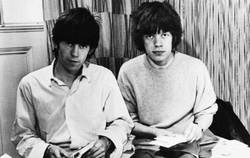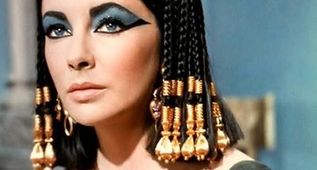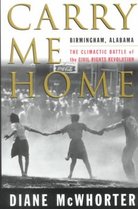|
From historic events and speeches to new-fangled inventions, we’ve been looking at people, places and things that are celebrating their 50th anniversaries in 2013. 1963 was obviously a swingin’ year because it birthed the Rolling Stones, Puff the Magic Dragon, Elizabeth Taylor’s Cleopatra film extravaganza, the first appearance of the Beatles on American television and Dr. Who. Oh, and La Gioconda (more commonly known as the Mona Lisa) went on display in the United States for the first time.  "Fanmail from some flounder?" Mick, Keith and the other two formed a band in 1962 and played the local clubs, but didn’t land a recording contract until May of 1963, when they signed with Decca Records (on the recommendation of George Harrison, who held no grudges considering that Decca had rejected the Beatles the year before). "Gee, Mr. Peabody, that's great news for the music industry and the cultural zeitgeist!" "Well, yes, Sherman, up to a point. However, now we are stuck with the rather unseemly sight of Mick Jagger still shaking his skinny, nearly 70-year old ass to the tune of 'I Can't Get No Satisfaction.' And people still paying to see it."  Original 45 Meanwhile, that folk-singing trio, Peter, Paul and Mary were busy warbling a tune that has spawned ceaseless debate over the past 50 years. Is “Puff the Magic Dragon” really an ode to weed or merely a fanciful children’s ditty the likes of which Raffi or the Wiggles probably couldn't have come up with on their best day? (Although Tom Chapin might give them a run for their money.) Listen and discuss amongst yourselves (again.)  Dig the braids, Liz, but the shadow's way too much... One of the most expensive movies ever made (originally budgeted at $2 million, it wound up costing $44 million, which adjusted for inflation, would be $323 million in today's dollars), Cleopatra reeked of scandal before it ever debuted. (Half of the budget was probably spent on Liz Taylor's blue eyeshadow and black eye liner!) This 1963 epic, directed by Joseph L. Mankiewicz, is an historical drama with all the elements: elaborate sets, intricate costumes, name actors, a factual basis, and an overlong script (just over four hours). La Liz wallows in the role of Cleopatra, the Egyptian queen who seduces Julius Caesar (Rex Harrison) in a political move to hold onto her empire. When Caesar is offed by the Roman Senators, Cleopatra turns to Marc Antony (Richard Burton) for his support, enslaving him with her feminine wiles. The film won four Oscars (cinematography, art direction, costumes, and visual effects), wrecked two marriages, launched a tempestuous affair and two more marriages (both between Taylor and Burton) and nearly bankrupted the studio that produced it, 20th Century Fox. But, I'll say this for her, the woman sure knew how to make an entrance. "Gee, Mr. Peabody, you won't see anything like that in tomorrow's Rose Bowl Parade!" "No, Sherman, you won't. And although you can't tell it from the video, why was Cleopatra so negative?" "Gee, Mr. Peabody, I don't know." "Because she was... the queen of denial." Before they appeared live on Ed Sullivan in February of 1964, the Beatles were featured on American television on December 7, 1963, via a CBS news featurette on the Fab Four and Britain's Beatlemania. "Gee, Mr. Peabody, I love that 'sheepdog' hairstyle." "Yes, Sherman, I've noticed. But I thought the reporter got a bit carried away with that 'sound of the proletariat' reference." "I know, it's only rock n'roll, but I like it." "Wrong band, Sherman."  And then there's Dr. Who, the television program first produced by the BBC in 1963. It follows the adventures of a mysterious time-travelling alien known only as "The Doctor." He's a Time Lord from the planet Gallifrey, who explores time and space with various companions in his TARDIS, which looks like an old-fashioned British Police Box. Dr. Who is currently the longest-running science-fiction series broadcast on television, spanning twenty-six years on its original run. Over fifty years, the role of the Doctor has been played by eleven actors. "So, Mr. Peabody, why haven't we run into him on our time travels?"
"Different network, Sherman."
2 Comments
Last post we looked at the serious side of 1963 and the events of the civil rights movement that will mark their 50th anniversaries in the coming year. But since this blog is called "Ridiculous to Sublime," the writer always reserves the right to leap into the lighter side at a moment's notice. So, what do Lamborghinis, zip codes and push button phones have in common? They will also celebrate their golden anniversaries in 2013.  Today we set the controls of the WABAC Machine for a world tour of 1963's inventions and start-ups. Ready, Sherman? Our first stop is Sant'Agata Bolognese, a small community in northern Italy, just outside the city of Bologna, where in May of 1963, Ferruccio Lamborghini built a "large and ultramodern factory" in which to manufacture luxury sportscars. Even though he was the wealthy and successful owner of several businesses, including a tractor manufacturing company, people thought it was absolute "madness" to try to build a car to compete with Ferrari. Well, perhaps. But Lamborghini was a very hands-on owner and out of his belief rose a masterpiece. (We shall know them by their cost.) "And what became of the rivalry with Ferrari, Mr. Peabody?" "Well that you may ask, Sherman. Short answer: Ferrari sells more, Lamborghini is faster. But here's a lovely infographic smackdown to explain it all."  Via: Car Insurance List Via: Car Insurance List Next we travel to Philadelphia, Pennsylvania where Robert Moon, a mild-mannered postal inspector (these being the days when the expression "going postal" could be interpreted as sending a letter through the mail, rather than engaging in homicidal behavior) pondered the age-old question of improving mail delivery. In the late 1940's, he actually came up with a three-digit system for a zone improvement plan, hence the acronym ZIP code. He submitted his proposal and it languished for awhile, until some genius rebranded it with more digits. It was finally implemented in 1963 as a five-digit system. Now of course, they are up to nine. (Someday they might even go to eleven...) As always, there is a downside to these things... without the ZIP Code, we would never have had to suffer through a single episode of "Beverly Hills 90210." Let's extend our sojourn in Pennsylvania and traverse to the Pittsburgh metropolitan area and the towns of Carnegie and Greensburg, where the touch-tone telephone was introduced. AT&T (American Telephone and Telegraph, back in the day) offered the first public commercial service, for an extra charge. (Of course!) Proto-type push button phones had been around since the 1940's but the Western Electric 1500 model was the first sold to consumers. It featured 10 buttons instead of the standard rotary dial. A 12-button model featuring the * and # keys was introduced soon afterward and replaced the 10-button model. For a look at 17 configurations that didn't make it, check out this article at Mental Floss. "Golly, Susie, what'll they think of next? Sending messages to someone without even talking?"
"Oh, don't be silly, Bobby. The telegraph is so last Wednesday." While everyone else seems obsessed with looking back at the best and worst of 2012 (of which there was, I admit, a lot), I suggest we make like Mr. Peabody and set the WABAC Machine to 1963 and take a stroll through all the good, bad and ugly events that will be celebrating their 50th anniversaries in the coming year. Ready, Sherman?  "Set the controls to 1963." We set the WABAC controls for the territory of the American South and just like that we are at Ground Zero of the Civil Rights Movement. 1963 is a year of pivotal moments in the quest for human rights in the United States, some triumphant and some tragic.  Gantt outside Clemson University In January, African-American student Harvey Gantt enrolls in Clemson University in South Carolina, which is the last state to hold out again racial integration. In the spring, Birmingham, Alabama becomes the epicenter of demonstrations. On April 16, Dr. Martin Luther King, Jr. is arrested and jailed there during anti-segregation protests. During his confinement, he writes his seminal "Letter from Birmingham Jail," in which he argues that individuals have a moral duty to disobey unjust laws. The following month, Birmingham Commissioner of Public Safety Eugene "Bull" Connor turns his fire hoses and police dogs on black demonstrators. The images of police brutality are televised and published widely, increasing sympathy for the movement throughout the country and across the globe.  LIFE cover of Evers' funeral The movement suffers a harsh blow with the assassination of Medgar Evers, an activist and field secretary for the NAACP, outside his Mississippi on June 12. At summer’s end, African-American sociologist, historian and civil rights activist, W.E.B. DuBois dies. The very next day, August 28th, the March on Washington takes place and 200,000 participants gather for peaceful protest and to hear King deliver his immortal “I Have a Dream” speech on the steps of the Lincoln Monument. Just 18 days later, a bomb explodes at the 16th Street Baptist Church in Birmingham, killing four young girls attending Sunday school. The church is frequently used for movement meetings. Riots erupt, leading to the deaths of two more black youths.  Malcolm X In the waning of the year, on November 13, Malcolm X gives a speech in Detroit, Michigan commonly known as the “Message to the grassroots.” In the address, given before the Northern Negro Grassroots Leadership conference, he makes a seminal statement on Black Power and the Civil Rights Movement, defining revolution and arguing in favor of a worldwide union of nonwhites against the powerful and privileged who benefit from white racism. So there you have it. In 1963, the small sparks of freedom kindled by activists through voter-registration drives, lunch counter sit-ins, and Freedom Rides ignite into a fire which consumes the entire South. Just 50 short years ago... To read more about it...  Parting the Waters: America in the King Years, 1958-63 Taylor Branch (Simon and Schuster, 1988) First book of a trilogy, this Pulitzer Prize winner focuses on Martin Luther King, Jr., and the key moments that defined his rise to the forefront of the civil rights movement in America, from Rosa Parks' arrest in Montgomery to King's imprisonment in Birmingham and his triumphant march on Washington.  Carry Me Home: Birmingham, Alabama Diane McWhorter (Simon and Schuster, 2001) A journalist who grew up in Birmingham as a member of one of the city's leading families chronicles the peak of the civil rights movement, focusing on the African-American freedom fighters who stood firm on issues of civil rights and segregation during the movement's eventful climax.  On the Road to Freedom: a guided tour of the civil rights trail Charles E. Cobb, Jr. (Algonquin Books of Chapel Hill, 2008) An award-winning black journalist takes a pilgrimage through the sites and landmarks of the civil rights movement as he journeys to key locales that served as a backdrop to important events of the 1960s, traveling around the country to pay tribute to the people, organizations, and events that transformed America. Stayed tuned for our next episode, in which the WABAC Machine will help us pinpoint some of the lighter events and inventions which will celebrate their golden anniversaries in 2013...
|
AuthorTo find out more about me, click on the Not Your Average Jo tab. Archives
February 2024
Categories
All
|





 RSS Feed
RSS Feed